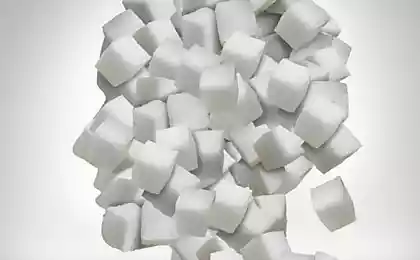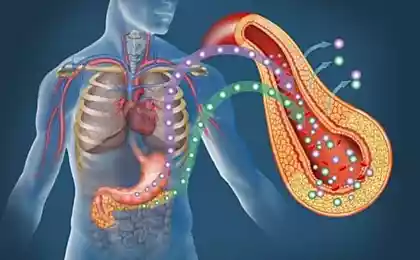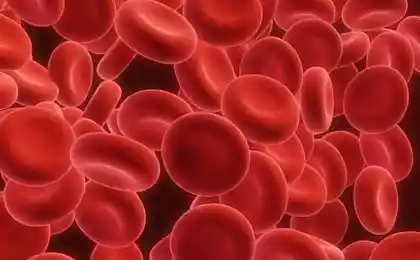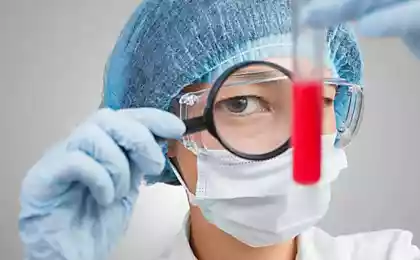711
It is important to know! Symptoms of diabetes 1 and 2 type
Diabetes: symptomsQuestion - "diabetes symptoms" is the first thing that comes to mind is a man, suspecting this complex disease. In this article we will discuss the main symptoms that You should pay attention to.
According to conservative estimates by the International diabetes Federation (IDF), today in the world more than 366 million people with diabetes, and half of them do not know about their disease.
Often diabetes from time to time doesn't. Of the total number of patients with diabetes около5% — diabetes type 1 diabetes and 95% — diabetes type 2 diabetes.
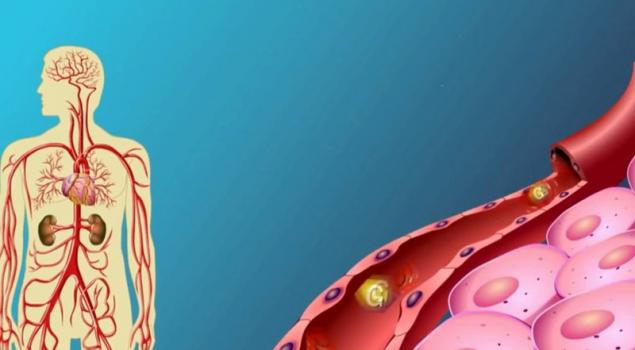
Essentially, this is two completely different, diametrically opposed on the reasons for the development of diseases that have one common symptom is the increase in blood sugar. Until the late 80-ies of the 20th century, diabetes was called type 1 diabetes, it is that form that without insulin therapy guaranteed, and quickly led to death. The 2nd type is called is not diabetes, violation of glucose tolerance that still correct!
Suffering from this form of the disease could have many years to live, maneuvering diet, herbs and increase physical activity.
The insulin in this form is sometimes temporarily appointed during surgery, severe infectious diseases and the persistent reluctance of patient to change their lifestyle. And it was right, because in most cases, studies have shown excess secretion of insulin in such "diabetics". In many developed countries, where in General there is a high level of insurance medical care, this category of patients, unlike type 1, has been significantly overlooked in economic terms (hypoglycemic agents and means of control of patients with type 2 diabetes buying for your money!). The difference in the attitude of the state and doctors to these two categories was rather big!
However, with the development of the humanization of society, namely in the late 80-ies of the last century, in the upper echelons of the medical community the decision was made to neutralize the difference between these patients continue to uchityvat both diseases as one, whose name is "diabetes".
And, if used for every 5(!) diabetes type 1 (diabetes mellitus) accounted for 95(!) patients with type 2 (impaired glucose tolerance), and a trickle of government funding has been flowing mainly to the 5% of the total number of people with high sugars, now the cost to society for the solution of the problem has increased 20 times!That is one of the reasons the so-called "epidemic of diabetes".
By the way, according to the statistics of the primary incidence of type 1 diabetes per 100,000 inhabitants over the last 90 years has changed very slightly. What can be said about type 2 diabetes. With these citizens — it's an epidemic... the Reasons are clear as day: total lack of exercise, obesity, increasing consumption of refined foods, primarily starches and white sugar, an increase Cristoforo pressure on the psyche due to the acceleration of the pace of life. And that there is only intensive introduction around the world in the food component naselenieto wheat flour of the highest quality! And nobody said that the process of bleaching flour, it appears that substance as alloxan, and no one is monitoring.
Namely alloxan in experimental animals is called heavy type 2 diabetes! So while the rescue of drowning — the handiwork of drowning...
Symptoms of diabetes different diabetes type I and type II diabetes.
Sometimes, with type 2 diabetes may not have any symptoms, and diabetes define, for example, referring to the ophthalmologist during the examination of the fundus.
But there is a set of diabetes symptoms, characteristic for diabetes of both types. The severity of symptoms depends on the degree of reduction of insulin secretion, the duration of the disease and the individual characteristics of the patient. In addition to the diabetes first and second type, there is still diabetes MODY-2, 3, 4, 5. There is another gestational diabetes other types of diabetes.
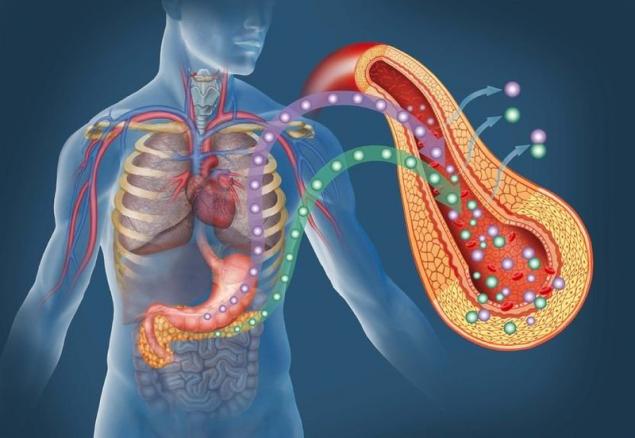
For simplicity, in this abstract, we will not touch them, due to the rarity and complexity of such mellitus.
Diabetes symptoms:
Symptoms of diabetes type 1 include: frequent urination, unusual thirst, nausea, vomiting, weakness and fatigue, weight loss (despite normal or even increased food intake), some (but not all) are worried about the constant hunger, irritability. In children, bedwetting is one of the signs of diabetes, especially in those cases where earlier a child bed wetting. During the phase preceding the manifestation of diabetes mellitus type I, there are situations when the level of glucose in the blood or becomes very high or very low. Both of these condition possible before the patient begins to inject insulin! Each of these States require emergency medical care and may indicate the approach of diabetes type 1 diabetes.
Symptoms of diabetes type 2 include: itching, blurred vision, unusual thirst, drowsiness, fatigue, skin infections, slow wound healing, numbness and paresthesias of the feet. The disease begins in adulthood and is usually associated with malnutrition. With this type of diabetes there are also flu-like symptoms, loss of hair on legs, increased hair growth on the face, small yellow growths on the body called xanthomas. Balanoposthitis (inflammation of foreskin) often is the first sign of diabetes and is associated with frequent urination failure to comply with elementary principles of hygiene.
In order to establish the diagnosis "diabetes", you need to define two indicators:
1. The sugar level in the blood;
2. The level of sugar in the urine.
diabetes symptoms (blood sugar level)
The level of sugar in the blood: the Normal Fasting Excess of 6.5 mmol/l more than 6.5 mmol/l After ingestion of 7.5 mmol/l greater than 7.5 mmol/l Repeated rise of blood sugar level fasting more than 6.5 mmol/l shows the development in a patient of diabetes. The normal sugar in urine is not determined, since the renal filter retains all the glucose. And when blood sugar levels more than 160-180 mg% (8,8-9,9 mmol/l) renal filter starts to pass sugar in the urine. Therefore, a urine output of more or less significant amount of glucose.Its presence in urine can be determined using a special test strips. Minimum level of sugar content in the blood, in which he begins to be detected in the urine, called the "renal threshold."

As the figures in the table, different authors are treated differently, in order to obtain accurate results it is recommended to conduct the following test:
1. Fasting to determine the level of blood sugar.
2. To drink 75 g of grape sugar (glucose), diluted in 300 ml of boiling water.
3. After 60 minutes to determine the level of blood sugar.
4. After 120 minutes re-determine blood sugar levels.
The test is considered negative, ie, not confirming the diagnosis of diabetes, if the blood taken fasting sugar levels below 6.5 mmol/l, and in the blood taken after 120 minutes — below 7.7 mmol/L. If the first measurement of sugar levels above 6.6 mmol/l, and when measured after 2 hours is higher than 11.1 mmol/l, this result confirms the presence in a patient of diabetes. This means that should consult a doctor!
PS Since mid-2016 Russian Ministry of health established a new norm (!!!) blood glucose for pregnant women to 5.3 mmol/liter. Anything above that falls under the diagnosis of "gestational diabetes", and PREGNANT women are requested to podelyatsya short insulin to reduce this figure! I, personally, was shocked by the madness of this event, have already become legitimate. But the fact remains. published
Author: Ernest Artemov
P. S. And remember, just changing your mind — together we change the world! ©
Source: //doctorartemov.com/content/sakharnyi-diabet-simptomy
According to conservative estimates by the International diabetes Federation (IDF), today in the world more than 366 million people with diabetes, and half of them do not know about their disease.
Often diabetes from time to time doesn't. Of the total number of patients with diabetes около5% — diabetes type 1 diabetes and 95% — diabetes type 2 diabetes.

Essentially, this is two completely different, diametrically opposed on the reasons for the development of diseases that have one common symptom is the increase in blood sugar. Until the late 80-ies of the 20th century, diabetes was called type 1 diabetes, it is that form that without insulin therapy guaranteed, and quickly led to death. The 2nd type is called is not diabetes, violation of glucose tolerance that still correct!
Suffering from this form of the disease could have many years to live, maneuvering diet, herbs and increase physical activity.
The insulin in this form is sometimes temporarily appointed during surgery, severe infectious diseases and the persistent reluctance of patient to change their lifestyle. And it was right, because in most cases, studies have shown excess secretion of insulin in such "diabetics". In many developed countries, where in General there is a high level of insurance medical care, this category of patients, unlike type 1, has been significantly overlooked in economic terms (hypoglycemic agents and means of control of patients with type 2 diabetes buying for your money!). The difference in the attitude of the state and doctors to these two categories was rather big!
However, with the development of the humanization of society, namely in the late 80-ies of the last century, in the upper echelons of the medical community the decision was made to neutralize the difference between these patients continue to uchityvat both diseases as one, whose name is "diabetes".
And, if used for every 5(!) diabetes type 1 (diabetes mellitus) accounted for 95(!) patients with type 2 (impaired glucose tolerance), and a trickle of government funding has been flowing mainly to the 5% of the total number of people with high sugars, now the cost to society for the solution of the problem has increased 20 times!That is one of the reasons the so-called "epidemic of diabetes".
By the way, according to the statistics of the primary incidence of type 1 diabetes per 100,000 inhabitants over the last 90 years has changed very slightly. What can be said about type 2 diabetes. With these citizens — it's an epidemic... the Reasons are clear as day: total lack of exercise, obesity, increasing consumption of refined foods, primarily starches and white sugar, an increase Cristoforo pressure on the psyche due to the acceleration of the pace of life. And that there is only intensive introduction around the world in the food component naselenieto wheat flour of the highest quality! And nobody said that the process of bleaching flour, it appears that substance as alloxan, and no one is monitoring.
Namely alloxan in experimental animals is called heavy type 2 diabetes! So while the rescue of drowning — the handiwork of drowning...
Symptoms of diabetes different diabetes type I and type II diabetes.
Sometimes, with type 2 diabetes may not have any symptoms, and diabetes define, for example, referring to the ophthalmologist during the examination of the fundus.
But there is a set of diabetes symptoms, characteristic for diabetes of both types. The severity of symptoms depends on the degree of reduction of insulin secretion, the duration of the disease and the individual characteristics of the patient. In addition to the diabetes first and second type, there is still diabetes MODY-2, 3, 4, 5. There is another gestational diabetes other types of diabetes.

For simplicity, in this abstract, we will not touch them, due to the rarity and complexity of such mellitus.
Diabetes symptoms:
- Increased thirst and frequent urination
- Dry skin
- Weight loss
- Cramping calf muscles
- Blurred vision
- Itching of the skin and mucous membranes of the genitals
Symptoms of diabetes type 1 include: frequent urination, unusual thirst, nausea, vomiting, weakness and fatigue, weight loss (despite normal or even increased food intake), some (but not all) are worried about the constant hunger, irritability. In children, bedwetting is one of the signs of diabetes, especially in those cases where earlier a child bed wetting. During the phase preceding the manifestation of diabetes mellitus type I, there are situations when the level of glucose in the blood or becomes very high or very low. Both of these condition possible before the patient begins to inject insulin! Each of these States require emergency medical care and may indicate the approach of diabetes type 1 diabetes.
Symptoms of diabetes type 2 include: itching, blurred vision, unusual thirst, drowsiness, fatigue, skin infections, slow wound healing, numbness and paresthesias of the feet. The disease begins in adulthood and is usually associated with malnutrition. With this type of diabetes there are also flu-like symptoms, loss of hair on legs, increased hair growth on the face, small yellow growths on the body called xanthomas. Balanoposthitis (inflammation of foreskin) often is the first sign of diabetes and is associated with frequent urination failure to comply with elementary principles of hygiene.
In order to establish the diagnosis "diabetes", you need to define two indicators:
1. The sugar level in the blood;
2. The level of sugar in the urine.
diabetes symptoms (blood sugar level)
The level of sugar in the blood: the Normal Fasting Excess of 6.5 mmol/l more than 6.5 mmol/l After ingestion of 7.5 mmol/l greater than 7.5 mmol/l Repeated rise of blood sugar level fasting more than 6.5 mmol/l shows the development in a patient of diabetes. The normal sugar in urine is not determined, since the renal filter retains all the glucose. And when blood sugar levels more than 160-180 mg% (8,8-9,9 mmol/l) renal filter starts to pass sugar in the urine. Therefore, a urine output of more or less significant amount of glucose.Its presence in urine can be determined using a special test strips. Minimum level of sugar content in the blood, in which he begins to be detected in the urine, called the "renal threshold."

As the figures in the table, different authors are treated differently, in order to obtain accurate results it is recommended to conduct the following test:
1. Fasting to determine the level of blood sugar.
2. To drink 75 g of grape sugar (glucose), diluted in 300 ml of boiling water.
3. After 60 minutes to determine the level of blood sugar.
4. After 120 minutes re-determine blood sugar levels.
The test is considered negative, ie, not confirming the diagnosis of diabetes, if the blood taken fasting sugar levels below 6.5 mmol/l, and in the blood taken after 120 minutes — below 7.7 mmol/L. If the first measurement of sugar levels above 6.6 mmol/l, and when measured after 2 hours is higher than 11.1 mmol/l, this result confirms the presence in a patient of diabetes. This means that should consult a doctor!
PS Since mid-2016 Russian Ministry of health established a new norm (!!!) blood glucose for pregnant women to 5.3 mmol/liter. Anything above that falls under the diagnosis of "gestational diabetes", and PREGNANT women are requested to podelyatsya short insulin to reduce this figure! I, personally, was shocked by the madness of this event, have already become legitimate. But the fact remains. published
Author: Ernest Artemov
P. S. And remember, just changing your mind — together we change the world! ©
Source: //doctorartemov.com/content/sakharnyi-diabet-simptomy

